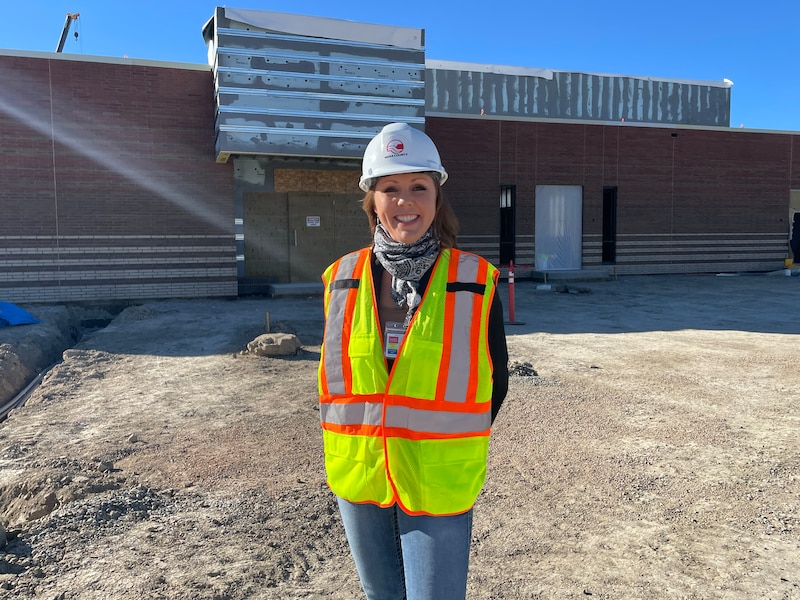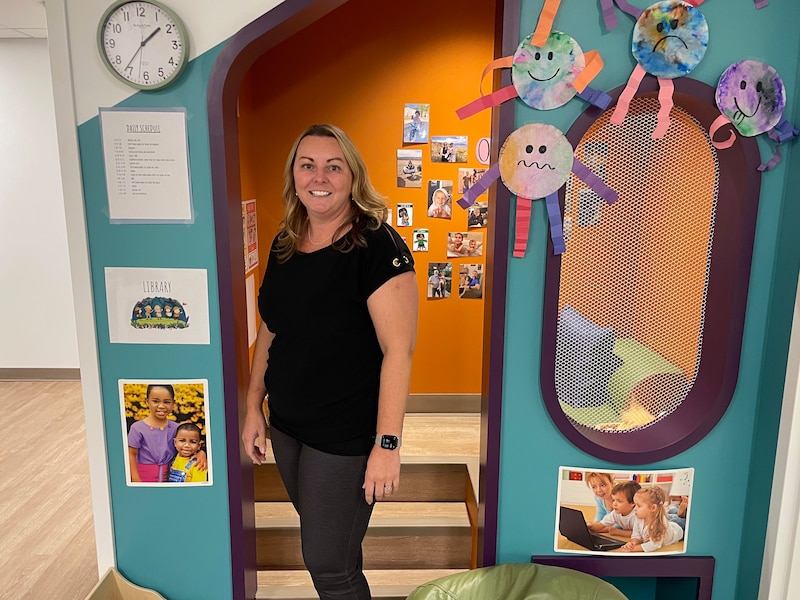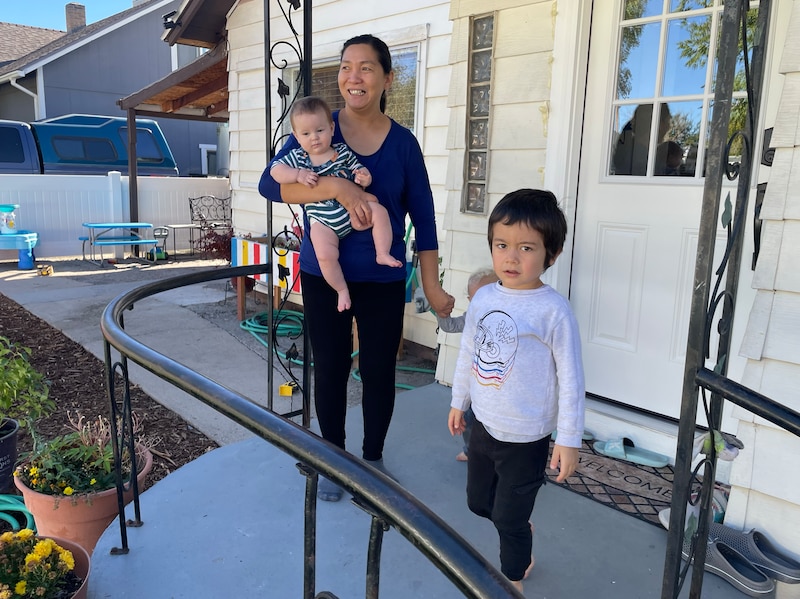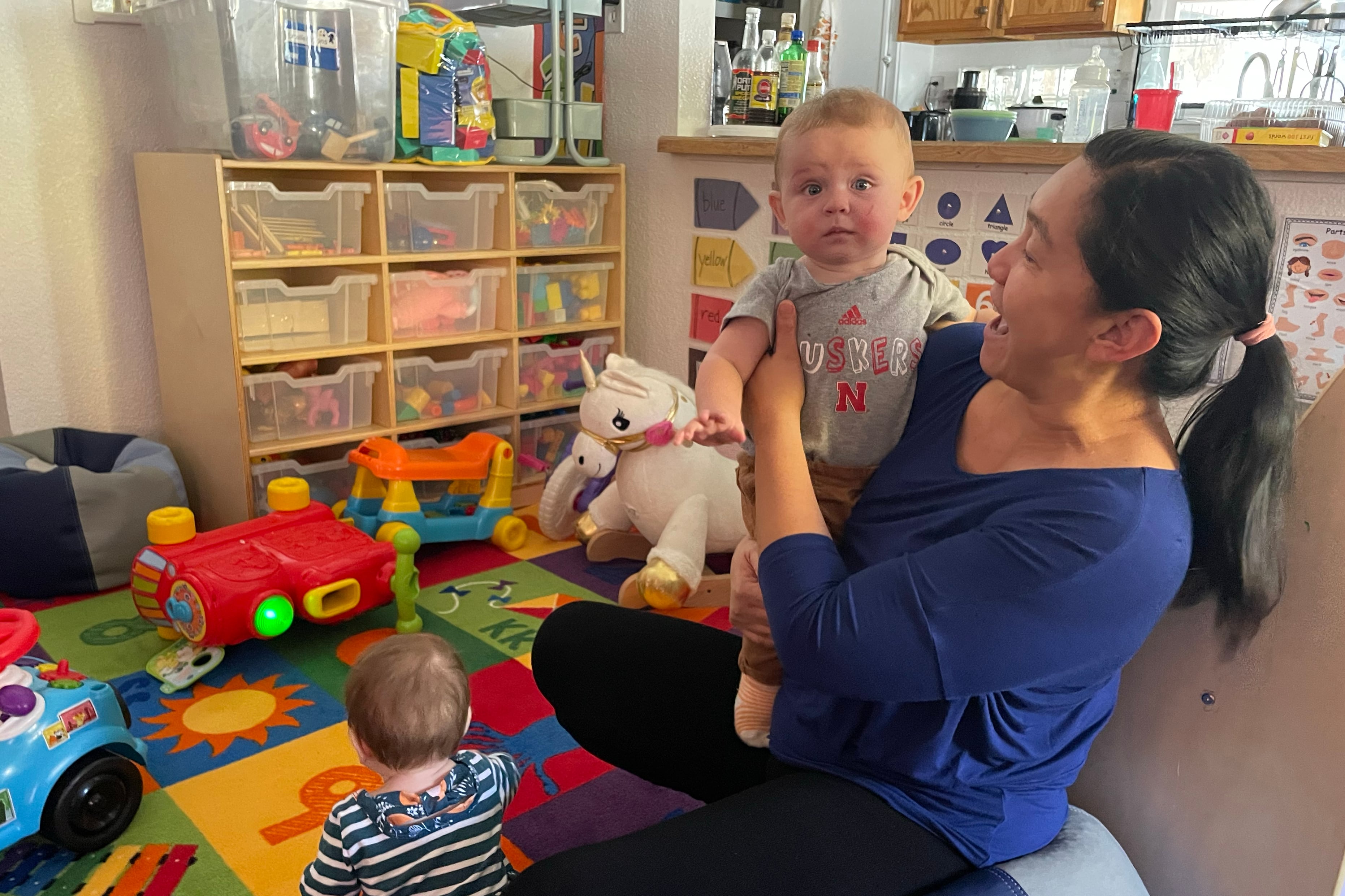A little over a year ago, Grace Luchavez opened a child care program in her Grand Junction home in western Colorado. Today, the former nursing assistant cares for a handful of children in a living room accessorized with a colorful alphabet rug and lined with toy bins.
Five miles away, a new state-of-the-art child care center is going up in a former alfalfa field, rising steadily from a skeleton of metal beams and concrete. A longtime local child care provider will operate the center, which will be the first in Clifton, an unincorporated community with more than 1,000 small children, many from low-income families.
Luchavez’s child care business and the future Clifton center represent some of the fruits of an ambitious campaign to double the number of child care slots and boost child care quality in Mesa County. The effort began in 2017 and was originally dubbed Child Care 8,000 for the number of slots county leaders hoped to reach. At the time, the county was losing child care seats by the dozens, parents were hamstrung by long waitlists, and employers were struggling to keep working parents on the job.
Jeff Kuhr, who then headed the county health department and was the chief architect of Child Care 8,000, believed high-quality child care could improve child and family well-being, and by extension, community well-being. It could help address everything from low elementary test scores to high suicide rates and workforce turnover.
Today, leaders and advocates in Mesa County say parents have more child care choices, quality is higher, and it’s easier for prospective child care providers to get into the field. But the county fell short of its ultimate goal: Instead of 8,000 child care slots, it has 5,000. That represents about 800 more slots than there used to be, but still not enough to meet the need.
Child Care 8,000 no longer exists as an official county initiative, but leaders say its message and momentum live on.
“We’re not done for sure, but definitely making strides,” said Stephanie Bivins, director of Mesa County’s early childhood council, a group that supports child care providers and families with young children.

She said Child Care 8,000 created a stronger early childhood ecosystem by getting county agencies, city leaders, local colleges, and businesses to work together on child care in an unprecedented way. The effort brought in new grant money, streamlined parts of the process for opening a child care business, and dramatically expanded free training for child care teachers.
Kuhr said more needs to be done to raise wages for early childhood staff, but he’s proud of what the effort has accomplished.
“It changed the values of Mesa County,” he said, “It put early childhood education on the map.”
Finding child care that’s still far away
Parent Kaycie Crider knows what it’s like to scramble for child care. When she had her first child five years ago, “I ended up rearranging my entire life to stay home,” she said.
She cared for her daughter while working from home in the tiny ranching town of Colbran in eastern Mesa County. She assisted a real estate broker with paperwork on a contract basis. But things got tricky when her second child, a son, grew into a busy, inquisitive toddler.
“He was too active … climbing on counters when I was trying to put on my professional voice and answer the phone,” she said. “It just was too crazy.”
Last summer, Crider, who now sells commercial playground equipment, decided to put her children in child care a few days a week. She found a licensed home-based provider near Grand Junction who’d opened about six months before. She also relied on her father to care for the children one day a week. She and her husband, a lineman for the local power utility, took turns caring for the children on Fridays.
The hard part of Crider’s child care search wasn’t finding open slots, but finding them in a convenient location for an affordable price. Last fall, her commute to work in Palisade was an hour and 20 minutes, partly because she drove 12 miles out of her way to drop the kids at child care each morning.
This winter, she switched her son and daughter to a Grand Junction child care center partly because tuition was lower — $78 a day instead of $110 — and partly so her son could be around more kids his age. Her commute each way is eight miles longer now.
Ideally, Crider said, there’d be more child care options in or near Colbran. The local school district operates a preschool that her 4-year-old daughter now attends tuition-free two days a week through the state’s universal preschool program. But her son, who just turned 3, won’t qualify for more than a year.
Planning for healthy children and a healthy county
When Child Care 8,000 launched in 2017, the 8,000-slot goal represented about 60% of the county’s population of children age 12 and younger — the approximate proportion who needed child care either because both parents work or their household is led by a single parent who works.
Curtis Englehart, executive director of the Grand Junction Economic Partnership, which helps recruit companies to the area, said child care is a big issue for the business community.
“It can be right up there with cost of living,” he said. “If child care remains a huge barrier … then getting businesses to relocate or expand, they won’t have the workforce to do it.”
Bivins, who was early childhood coordinator for Mesa County Public Health before moving to the early childhood council in 2021, started her work on Child Care 8,000 by gathering data at five child care centers. She discovered they were operating at about 70% capacity, not because of a lack of demand, but because they couldn’t find qualified staff.
“There were so many costs associated with entering the field,” she said. “To get [an entry-level Child Development Associate credential] is about two grand and these folks are making minimum wage. They can’t afford that.”
Bivins and the rest of the team set about making it easier and cheaper for people to enter the field and advance once they were in it. They gave out scholarships for training courses, offered stipends so prospective providers could afford to take off work for child care credential exams, and dramatically expanded coaching and technical assistance for new providers.
“Now, we have a full career pipeline that we’ve built over the last few years,” she said.
The work of Child Care 8,000 was funded through a variety of sources, including a state 2Generation Opportunities grant, county health department dollars, and federal COVID aid.
Several employees at the Grand Junction’s Eureka! McConnell Science Museum — which launched a full-day preschool program three years ago — have taken advantage of the free early childhood classes and training.
They include staff who worked at the museum’s reception desk and in other non-child care jobs. The financial help allowed them to land full-time early childhood jobs with benefits, said Jenn Moore, the museum’s executive director.
“They would never have done it without the county providing these financial offsets just because it’s too expensive,” she said.
Englehart said although it’s still particularly tough to find infant care in the county, it’s getting easier for families to find child care generally — and for businesses to take a chance in the region. In 2023, 10 companies relocated or expanded to the Grand Junction area, creating 150 new jobs.
“Progress is definitely being made,” he said.
Employers expand child care options for employees
In a field marked by low pay, high stress, and lots of regulation, Child Care 8,000 was always destined to be a huge lift. And perhaps unsurprisingly, the topline goal of increasing the number of child care seats from 4,200 to 8,000 by the end of 2020 — a 90% jump — never materialized. Instead there was a more modest 20% increase in child care capacity.
“I didn’t ever expect that this was going to happen quickly” said Kuhr, who left his job at the health department last summer. “I feel like we’ve made some headway but we still have a ways to go.”
Mesa County did exceed its goal on child care quality, boosting the proportion of providers with one of the top three ratings on the state’s Colorado Shines rating system from 10% in 2017 to 40% today. That’s higher than the original goal of 30% and the statewide average of 24%.
There have been other high-profile gains, too. In the past few years, several local employers have opened centers to provide child care to their workers. Both Grand Junction and Community Hospital have opened child care centers for their employees — together creating 184 new seats.

County leaders also have high hopes for the Clifton project, which will create nearly 200 new child care slots, plus space for early childhood offices, training, and conferences.
In addition, a center that will serve employees of the Eureka museum along with four other nonprofits, is slated to open in 2025, provided the nonprofits can raise enough money for construction.
Several people involved in Child Care 8,000 said it shouldered much of the work that should have fallen to the county’s early childhood council, which was dysfunctional when Child Care 8,000 began. Today, under Bivins’ leadership, the council is well-regarded.
“That council is completely changed and it’s awesome,” said Kuhr.
Giving families flexibility and an attractive setting
One day last fall, Luchavez distracted a toddler who was on the brink of bumping a wobbly baby by asking him to tell a visitor his age.
“How old are you?” she said, from her perch on a blue pillow that looked like a beach ball. “Show your fingers.”
Gazing at Luchavez, who was holding up her own fingers as a hint, the 2-year-old rested his fists on his chin, with both index fingers pointing skyward. Then he hopped on a blue ride-on car and inched around the living room.

As a licensed home-based provider, Luchavez provides the cozy setting and flexible hours that lots of families seek, especially for infants and toddlers. Some days, she starts at 6:15 a.m. and sends the last child home around 7 p.m. — a long day for her, but priceless for parents who work 12-hour shifts.
During the pandemic, Luchavez worked nights as a nursing assistant at St. Mary’s Medical Center. But when a colleague struggled to find child care for her young son after her husband died, Luchavez offered to help out on her days off. From there, she decided to get a state license so she could accept more children and turn it into a full-time business.
Luchavez has a warm personality, calm demeanor, and lots of experience with children. She’s the mother of three adult daughters and used to help out at her sister’s child care program in Montrose. Still, she initially had doubts about whether she could jump through the hoops required to enter the highly-regulated world of licensed child care.
“Maybe I will not be able to pass or maybe I’ll not get that license,” she recalled thinking when she started the journey.
But she credits her coach from the early childhood council for helping every step of the way.
While Child Care 8,000 has encouraged home-based child care providers like Luchavez to enter the field, there are still fewer seats in home settings than before the pandemic. Bivins said the county is still working its way back from a huge deficit of such providers. But 2023 was a good year, with a net gain of 38 home-based child care slots in the county — a 9% increase from 2022.
Today, Luchavez gets calls about twice a week from parents looking for child care.
“Sorry, I’m already full,” she tells them.
Ann Schimke is a senior reporter at Chalkbeat, covering early childhood issues and early literacy. Contact Ann at aschimke@chalkbeat.org.







